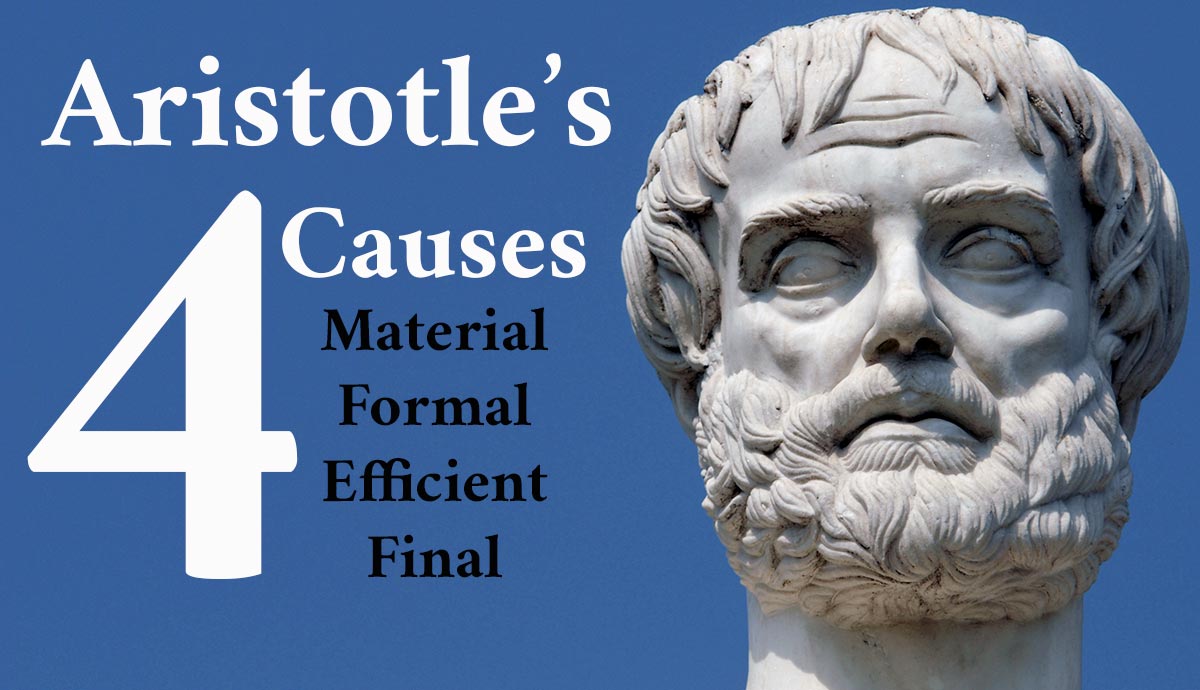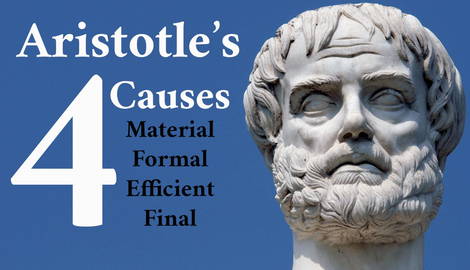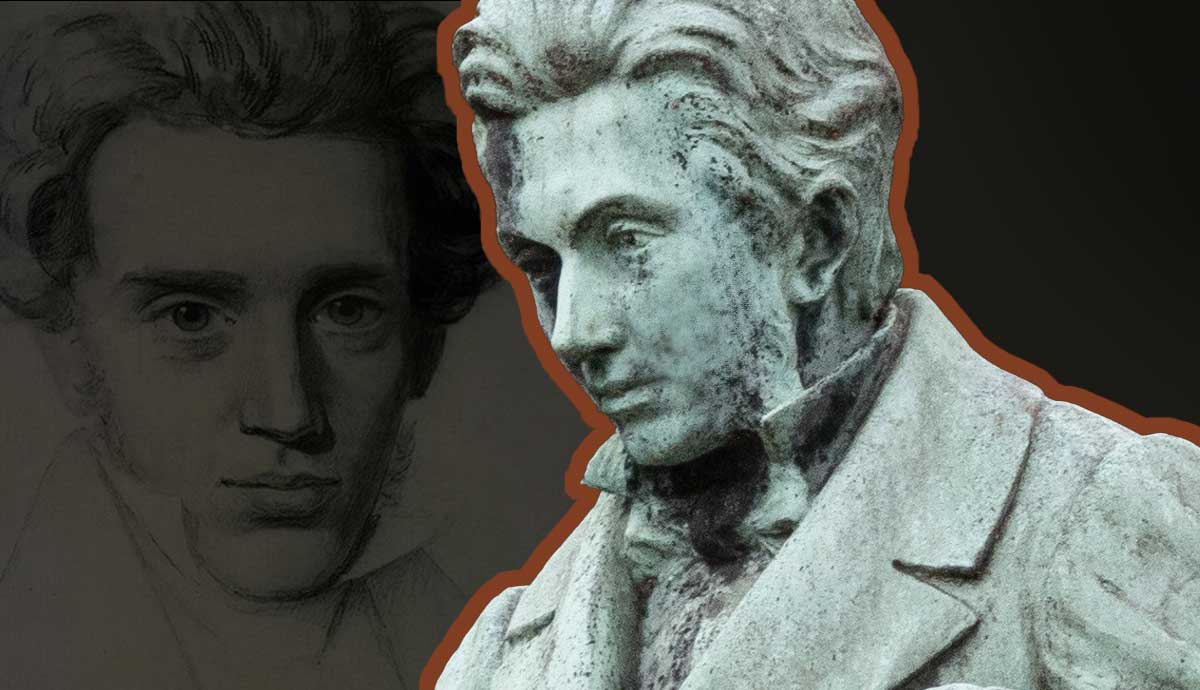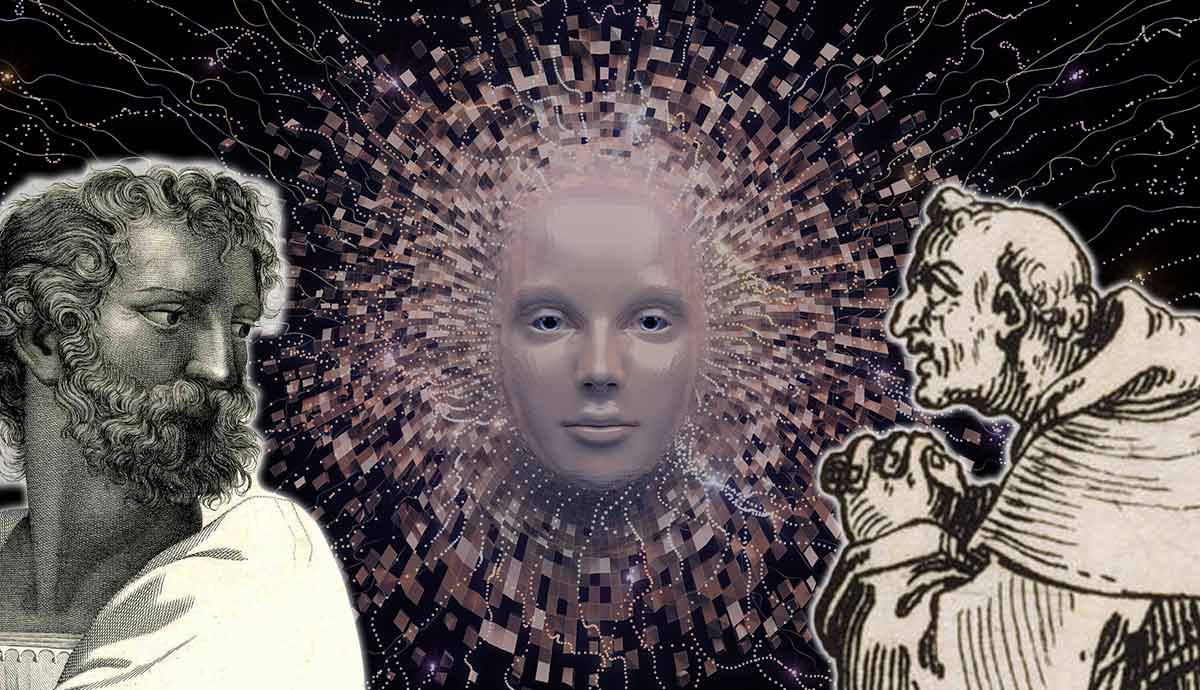
Have you ever wanted to know why things are how they are, not just what they are? Aristotle’s Four Causes can help. These ancient principles of explanation still influence us today in how we do science or even just think about daily stuff. In this piece, we’ll examine each Cause closely. So let’s dive into Aristotle’s philosophy and discover how influential it remains centuries after he lived, perhaps even shaping our worldview more than we realize.
The Material Cause: The Substance of Things

In Aristotle’s system, the Material Cause is the fundamental substance or substances out of which an object is composed. You might think of it as akin to the ingredients in a recipe without which nothing tangible can come into being. Accordingly, Aristotle thought that one must identify what something is made from if one wants to understand it at all.
For example, if you have a statue—say, one depicting some famous general—then its material cause would be the marble, bronze, or other material that it has been sculpted out of. If there were no such substance, then there could be no such statue, just an artist’s idea for one.
For instance, take a wooden chair. The Material Cause here is the wood itself—whether oak, pine or mahogany—which gives the chair its physical presence and enables it to function as a seat.
Aristotle’s genius lay in realizing that by identifying the Material Cause, we gain a deeper appreciation of why something exists. It is not just about what an object is—its form or function—but also the stuff out of which it is made.
This insight underpins Aristotle’s Four Causes. They alert us to the fact that what things are composed of, materially speaking, is crucial both to their identity and their role in the world.
The Formal Cause: The Blueprint of Reality

According to Aristotle, the Formal Cause is responsible for giving form to things. It can be thought of as an object’s blueprint or design – its essence or pattern.
If we take the example of a house, the architect’s plans are its Formal Cause. These plans determine everything from how many rooms there will be and what they’re like spatially speaking (the layout) through to aspects such as how light will enter living spaces and what overall structure is desired.
Without such blueprints, we wouldn’t really have a coherent house at all. We’d just have some building materials dumped somewhere.
Consider the case of a molecule in chemistry. The Formal Cause of the molecule—its pattern or structure, including how atoms are arranged and bonded—is what gives it its identity and properties. For example, that water is H2O.
While the Material Cause (the hydrogen and oxygen atoms) provides the substance, it is the Formal Cause that determines how these components join together to make water – enabling it to quench thirst or help nourish plants.
There is close interaction between the Formal Cause and the Material Cause. While the latter supplies material, it is the former which shapes this material into something meaningful and functional. Aristotle sees this interplay as key to understanding both why things alter (change) but also how they can stay constant.
Far from being a separate add-on, Aristotle argues that essence or form permeates down into matter itself so as to bring about order. Thus, objects are not random agglomerations of substances. Rather, they are purposeful wholes with parts playing roles within them.
The Efficient Cause: The Agent of Change

The Efficient Cause, according to Aristotle, is what triggers the process of creation or change. It can be an agent or a tool that brings about something, turning potential into reality.
For instance, when you see a sculptor working on a block of marble, here, the sculptor’s hands and tools are the Efficient Cause. They actively shape the marble – changing it from an unformed block into something completely new (say, a statue of Aphrodite).
Without the sculptor doing anything with it, the marble would just remain what it is: potential art.
Consider this example: a seed growing into a tree. The seed has within it the Material Cause (the matter from which it is made) and the Formal Cause (the genetic blueprint that directs its development).
But it is the Efficient Cause—factors like sunlight, water, and a supportive environment—that brings about the seed’s transformation. These elements act upon the seed, causing it to sprout, grow, and eventually become a towering oak or a fruit-bearing apple tree.
The concept of Efficient Cause is central to Aristotle’s understanding of nature and change. It is the agency that moves things from potentiality to actuality. It steers the process of coming into being (or passing away).
In every instance of creation or alteration there must be an Efficient Cause at work – whether we are talking about natural processes such as growth or human pursuits like craftsmanship.
By identifying this particular cause, Aristotle furnished us with not only a way to comprehend why something exists but also how it does. He underscored those dynamic aspects that mold our cosmos.
The Final Cause: The Purpose Behind Existence

In Aristotle’s philosophy, the Final Cause is the reason or purpose behind something’s existence – the “why” that explains it. It is what drives everything towards its fullest potential.
For instance, consider a knife. Its Final Cause is to cut things. Every aspect of the knife—such as its sharp edge (Material Cause), shape (Formal Cause), and even how it was made (Efficient Cause)—exists for this sole purpose. If the knife cannot cut, then it doesn’t serve its intended function and loses its reason for being there at all.
You can think of a plant as an example. According to Aristotle, the Final Cause of a plant is to grow, reproduce, and spread its seeds. Every part of the plant contributes to this goal in some way. Its roots take in nutrients from the soil (Material Cause). It has DNA instructions for how to grow into a full-sized plant (Formal Cause). And it needs sunlight and water as fuel for photosynthesis (Efficient Cause).
All these factors together mean that a living organism exists with this purpose in mind. Aristotle believed that the concept of Final Cause is what links all his Four Causes together. He saw this idea everywhere because he thought everything happens for a reason.
It gives meaning not only to how things happen or what they’re made out of but why they exist at all. By considering an object’s Final Cause we can start thinking about intentionality behind natural phenomena – highlighting a world where nothing lacks purpose.
The Interrelation of the Four Causes

In Aristotle’s view, the Four Causes are not independent ideas. Rather, they are closely linked and cooperate with one another in order to fully clarify an event.
To better comprehend this concept, consider the example of constructing a house. When it comes to the Material Cause, think about bricks, wood, mortar – essentially all of the physical substances present that enable it to exist. Moving on to the Formal Cause, this would involve the architectural blueprint that dictates both structure and appearance.
Next up is the Efficient Cause. What specifically brought about the house’s construction? In this case, we’d be looking at things like builders (alongside their tools) as factors. Lastly, give some thought to the Final Cause behind building a house. We can’t see comfort or safety upon initial inspection – but dwellings provide these things.
The presence of the house cannot be accounted for by any one of these causes alone: materials, blueprint, construction workers, or purpose. If any of these factors had been missing, the house would not exist.
All of the causes are necessary. They work together because they depend on each other. This idea is part of Aristotle’s way of thinking about things as a whole – systems in which every part is connected with every other part.
To understand why something is the way it is, Aristotle believed you have to look at all aspects of its existence. The Four Causes do this – they provide a framework that shows how everything about an object or event (its origin, what it’s made from, even its nature) is interconnected.
The Legacy of Aristotle’s Four Causes

Aristotle’s Four Causes have been extremely important in Western thought and have influenced philosophers for centuries. They were adopted into Christian theology by medieval thinkers such as Thomas Aquinas. And they continue to shape how we think about cause and effect today.
The idea that there are Material, Formal, Efficient, and Final causes behind everything that happens provides a complete system for understanding the world. It has been hugely important in both scientific investigations and metaphysics (the branch of philosophy that examines concepts such as existence and reality).
We can still see Aristotle’s Four Causes at work today. In science, for example, researchers might look at how knowledge of an organism’s DNA (its genetic material; its Formal Cause) or of the biochemical processes underlying life (an Efficient Cause) can lead to progress in fields such as medicine or genetics.
In everyday thinking too, people often consider what something is made from—its material cause—or what it’s for: its Final Cause.
However, not everyone agrees with Aristotle. Some contemporary thinkers reject entirely the idea of a final cause because they do not believe that everything happens (or exists) for a particular purpose.
Indeed, some have even developed new interpretations of causality to fit within alternative philosophical frameworks. Existentialism challenges the notion of any pre-determined purpose at all. Nonetheless, Aristotle’s Four Causes remains an important tool for investigating and making sense of our complex world.
So, What Are Aristotle’s Four Causes?

Aristotle’s Four Causes are the fundamental principles he used to explain the world. They provide a complete account of why things exist and how they come to be.
The Material Cause is the substance that makes up an object – for example, the wood of which a chair is made. The Formal Cause is the design or plan that dictates shape and identity.
The Efficient Cause is what brings something into being, such as a carpenter making a chair. Lastly, the Final Cause is an object’s ultimate aim or purpose – why it exists at all. In this case, maybe providing someone with somewhere to sit.
All four causes are interlinked and necessary for something’s creation or continued existence. By examining them systematically, Aristotle laid down a framework still used today: one that helps us not only describe an object but also understand its true nature and function.










